Multan is one of the most prominent cities of Pakistan. It is located on the bank of Chenab River.
Multan is the seventh largest city of Pakistan and is considered the economic and cultural hub of southern Punjab.
Multan is known for its deep roots with Sufism and antiquity. The ancient city is known to be a pillar of Sufism as many renowned Sufi saints are buried here. This is the city from where Islam spread in the subcontinent.
The city also has the site of renowned Hindu temple – sun temple which was later besieged by the alexander the great in his Malian campaign.
Multan also served as one of the most important trading paving ways for many medieval Islamic scholars and Sufi mystics in 11th and 12th centuries.
It earned the name of “City of Saints”
The origin of the name Multan is unknown but it is suggested that it was derived from the Persian world Mulastana which means “frontier land”
The region of Multan has been inhabited by human beings for over 2000 years now. It has so many archaeological sites dating back al the ay to 3000 BCE – the time of Indus valley civilisation.
This city has so many revolutions and different rulers and eras – ranging from Hindus to Sikhs to British raj to modern day Pakistan.
It holds immense importance in the history and the economy of current day Pakistan.
Have a look at some of the most beautiful historic places located in Multan and try visiting them on your next trip to Multan to take a step back into history.
Tomb of Shah-Rukn-Alam
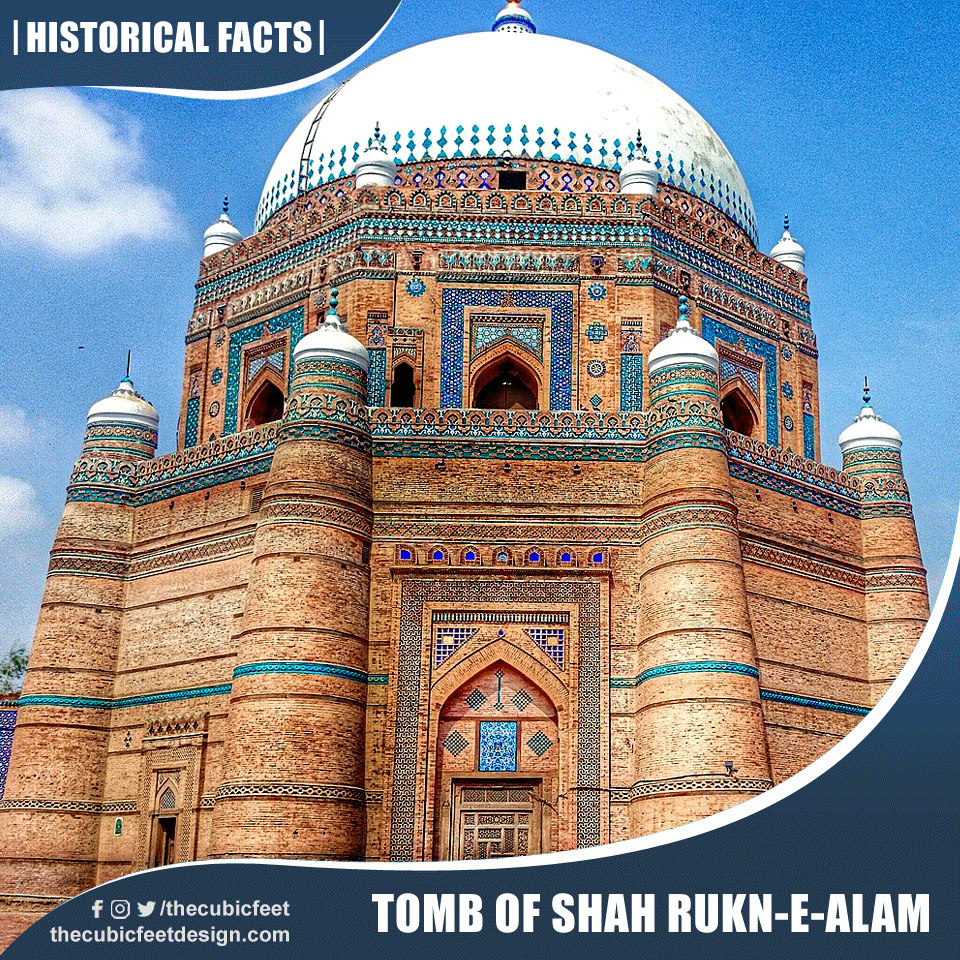
- Located in Multan, Pakistan.
- Tomb of one of the greatest Sufi Saint Sheikh Rukn-ud-Din Abul Fateh.
- Architecture is pre-Mughal also known as Tughluq style.
- One of the most impressive shrines in the Indian subcontinent
- More than 100,000 pilgrims come for annual Urs
- Tomb was built between 1320 to 1324
- Shrine is constructed on Suhrawadi base
- Has 3 entrances, western-facing Mehrab
- The shrine’s axises are aligned with Mecca
- Three-tier structure
- Built entirely in red brick
- Beams of sheesham wood
- Exterior is elaborated with carved wooden panels, carved bricks, turrets, and crenelation on the top
- Geometric motifs of dark blue, azure, and white tiles are prominent between the finely red polished bricks
- White dome is overly decorated with blue tile-work.
Shrine of Bahauddin Zakariya
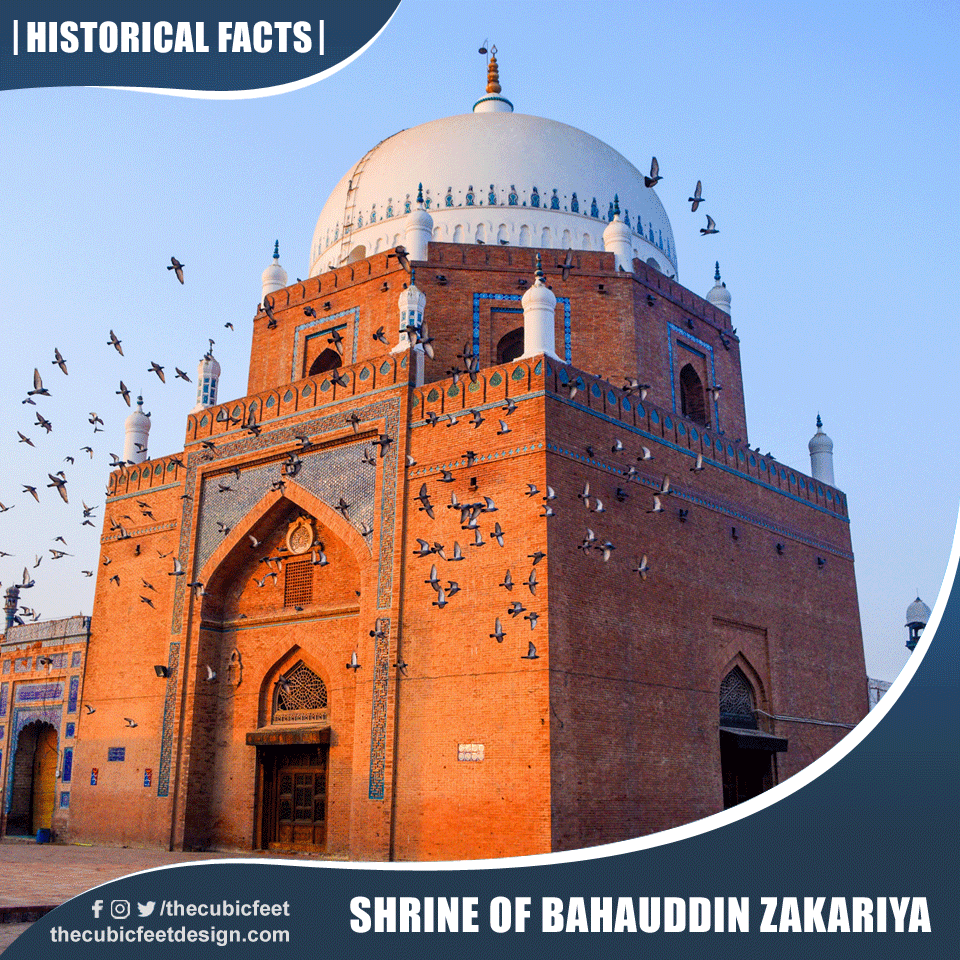
- It is a 13th-century shrine located in Multan, Pakistan.
- Shrine is dedicated to Muslim mystic Bahauddin Zakariya
- Was built in 1262.
- Shrine became the prototype for Multan’s distinctive architectural style.
- It is a two-tiered structure.
- Shrine is built of brick and is decorated with glazed blue tiles.
- A spacious brick verandah with a painted wooden ceiling was added to the shrine in 1952.
- Shrine is surrounded by graves of devotees and descendants of Baha Uddin Zakariya.
Tomb of Shah Gardezi
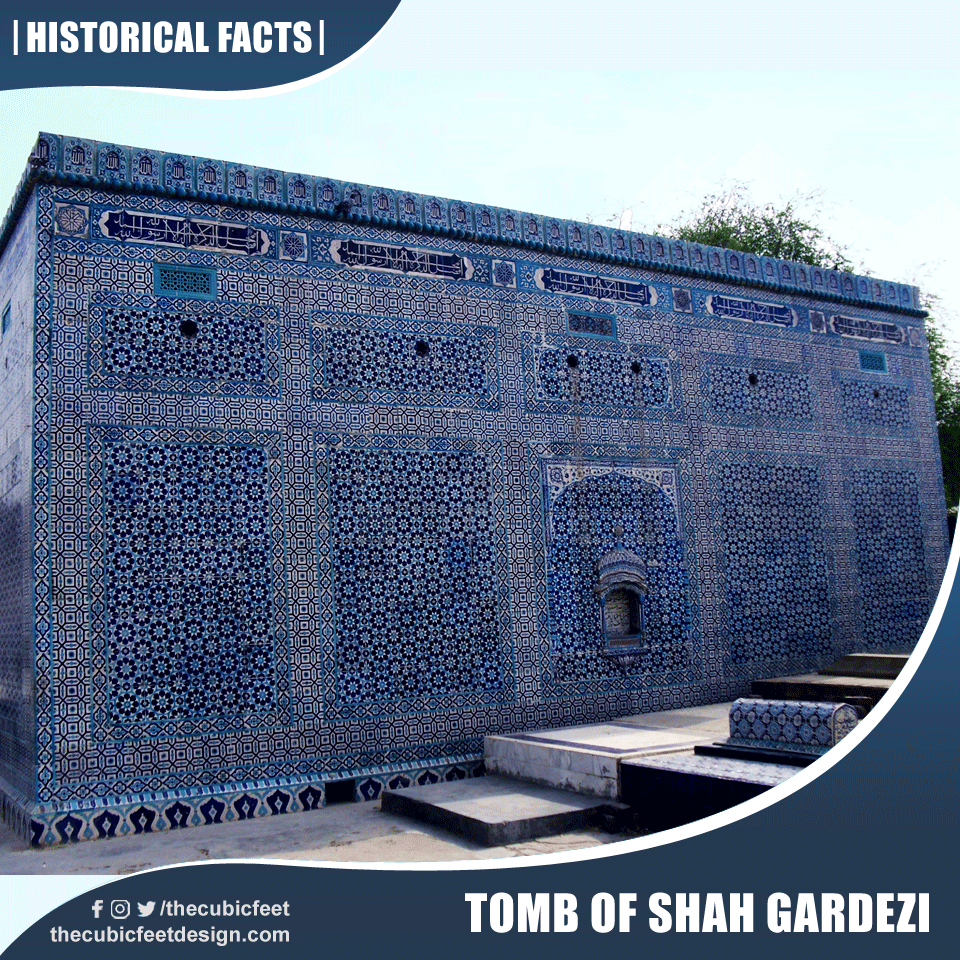
- Shah Yousuf Gardezi came to Multan in 1088 AD
- He is said to have restored the city of Multan
- The tomb’s architectural style is similar to the prevalent style in Multan and southern Punjabi cities
- Deeply rooted in Sufism
- The interior is extensively decorated by mirror-work known as Ayina Kari
- It is covered with blue tile-work known as Multani style
- The exterior is extensively decorated with couples by Shah Gardezi
Tomb of Shah Shams Sabzwari
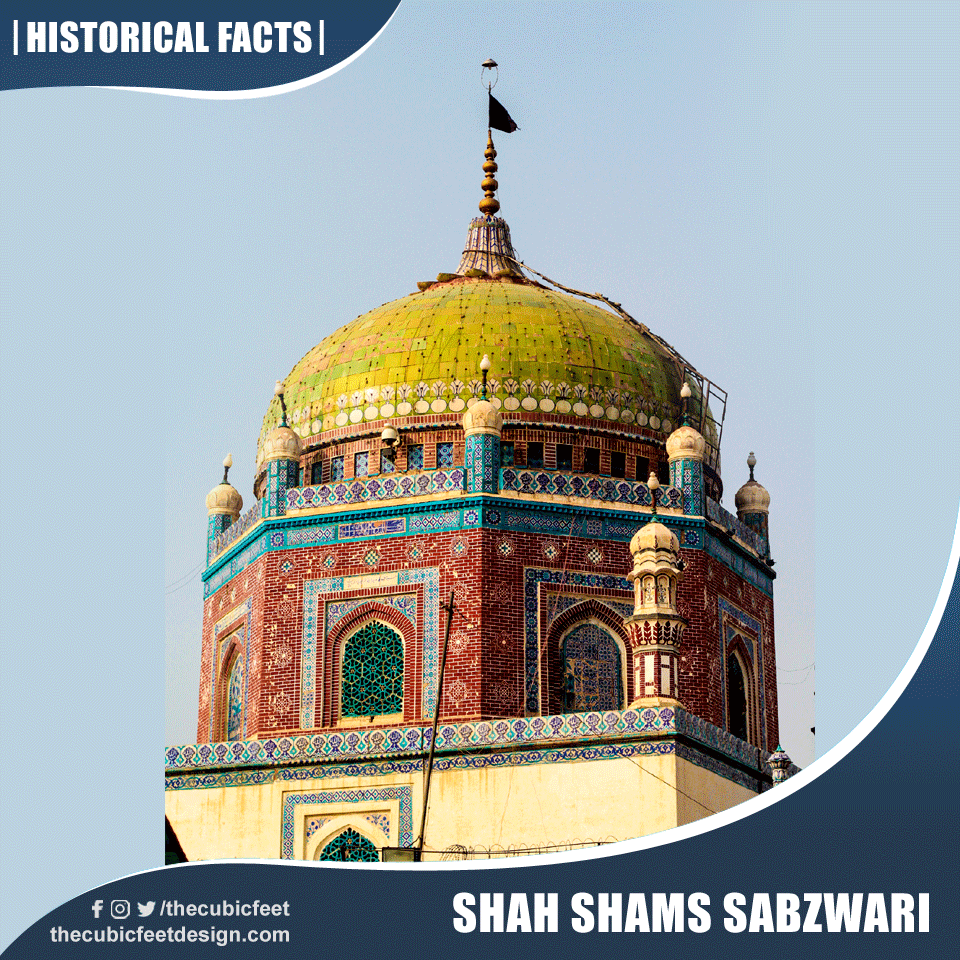
- Shams Uddin Sabzwari came to Multan in early 1200C.E.
- Established a dargah to preach Islam.
- Located half a mile away from Multan fort
- Built near the high bank of the old bed of the Ravi River
- The shrine was built by his grandson in 1330
- It is surmounted in a hemispherical dome.
- The tomb is decorated with ornamental glazed tiles.
- The Urs of Shah Shams takes place at the tomb every year in June.
Multan Garrison Mess
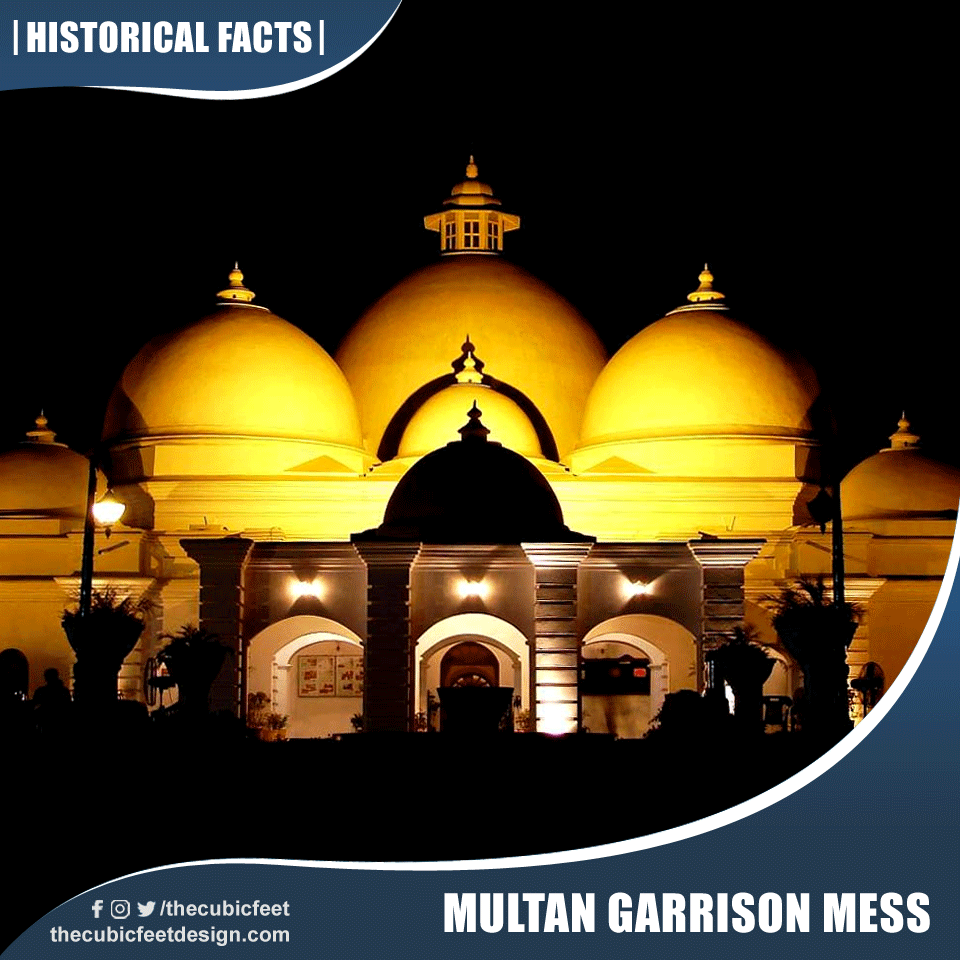
- One of the oldest buildings of Multan
- Was constructed in 1880
- Nawab Bahawalpur constructed this piece of art
- Architectural style is Turkish
- Was constructed entirely by clay bricks from Chenab River.
- Located in Multan cantonment, under Pak army
- Also known as Service club
- It has 13 domes of different sizes
- Now the interior of the mess is a sheer example of Mughal theme.
Mausoleum of Bibi Pak Daman
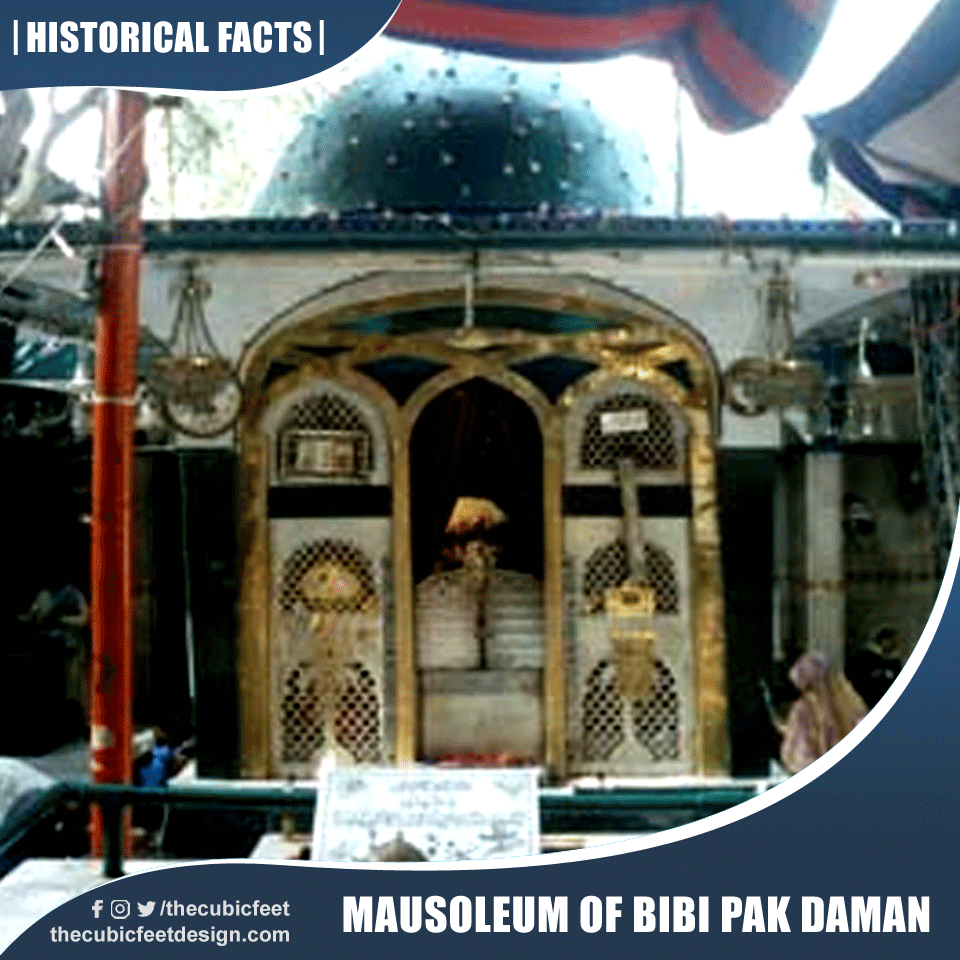
- Also known as Bibi Rasti- was mother of Shah Rukn-i-Alam
- Died in 1295, she was buried near the temple of Mai totla
- Mausoleum is roughly rectangular in shape and is decorated in signature blue and white tiles prevalent across Multan
- East façade is decorated with a set of triple arches
- Tomb stands at the center of a large walled compound
- The roof is decaying rapidly, raising the concerns of the archaeology department
- Half of the mausoleum was destroyed and lost in flood in 1817
Mausoleum of Shah Ali Akbar
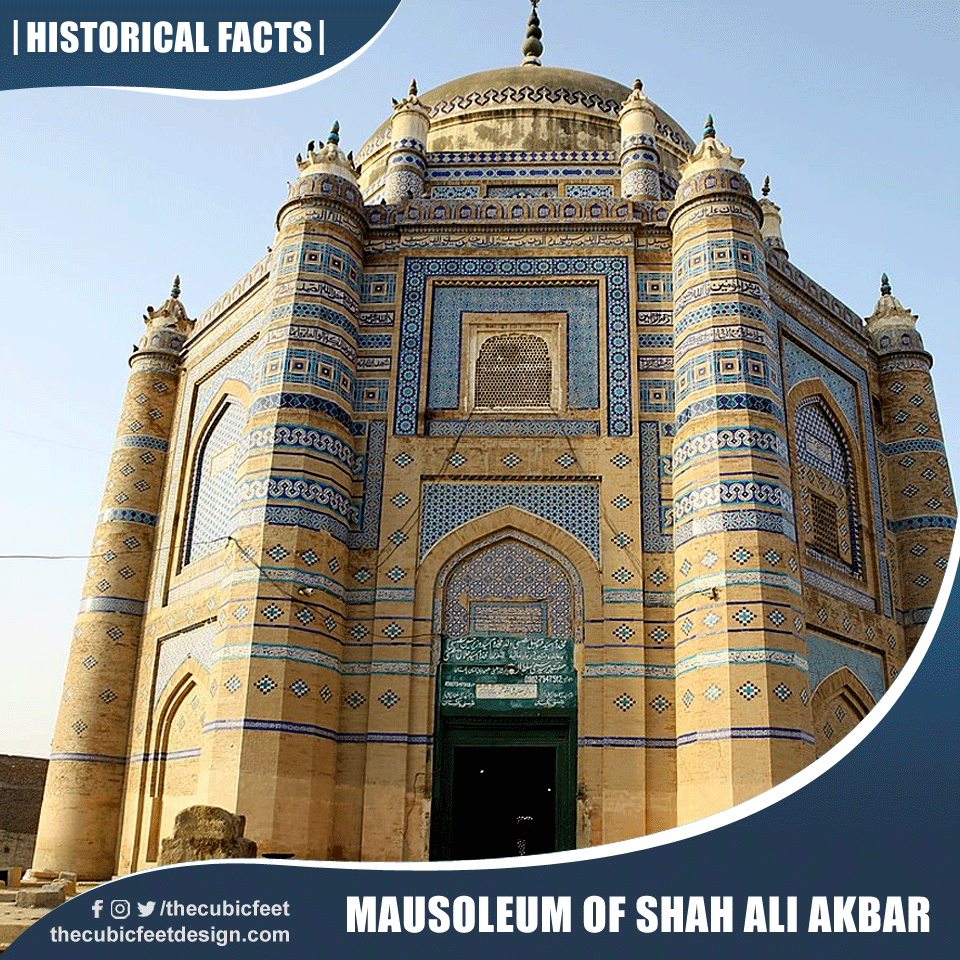
- Shah Ali Akbar was a descendant of Shah Shams Sabzwari
- The mausoleum is a mini version of Shah Rukn-e-Alam
- It is in signature octagonal shape of Multan architecture
- The foundation stone was laid in 1585
- Battered walls, tapering turrets and octagonal ground plan capped with domes are prominent in the building
- Architectural style is Tughluq style
- First building in Multan where plaster was used.
Tomb of Khawaja Awais Kagha
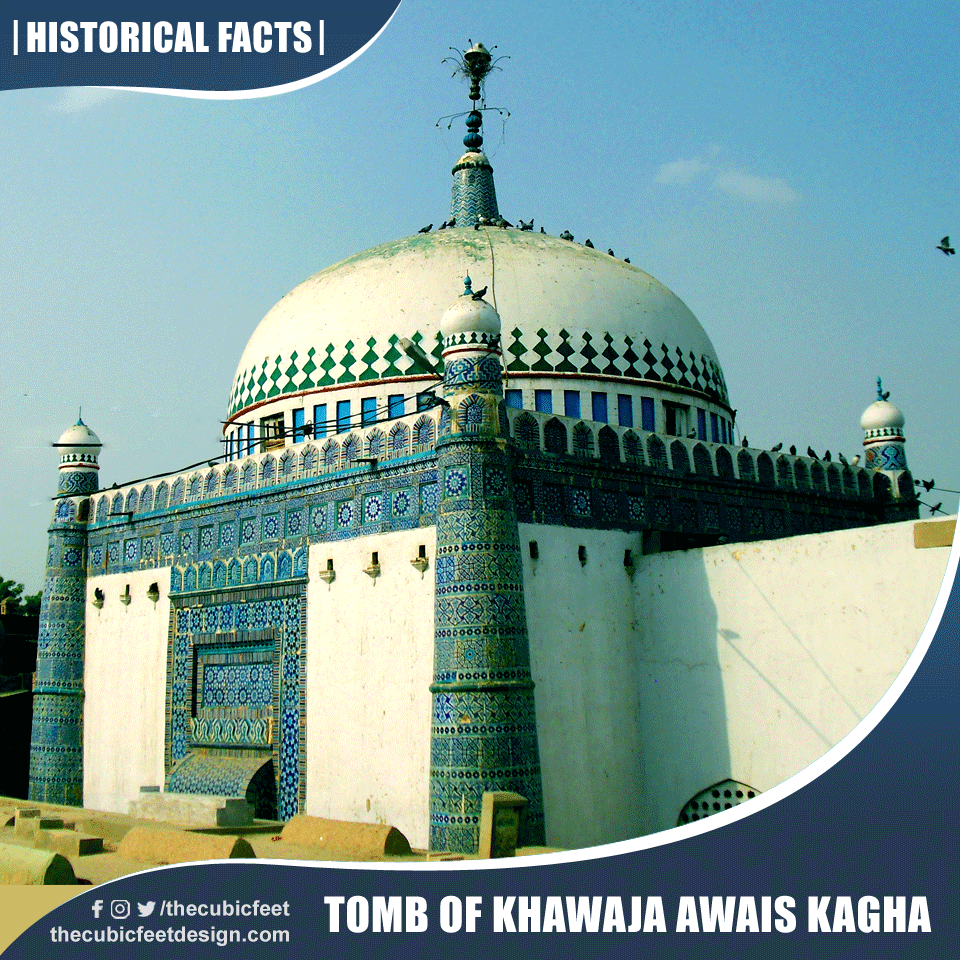
- Built somewhere in the 1300
- The tomb’s foundation stone was laid by Shah Rukn-e-Alam
- Tomb is located in a cemetery in Dera Basti
- Tomb is square in plan with tapered corner turrets also known as Gul Dastas along with a prominent dome
- Formal layout is identical with Ismail Samani mausoleum in Bukhara
- Dramatic usage of blue and white glazed tiles is prominent across the tomb
Ghanta Ghar
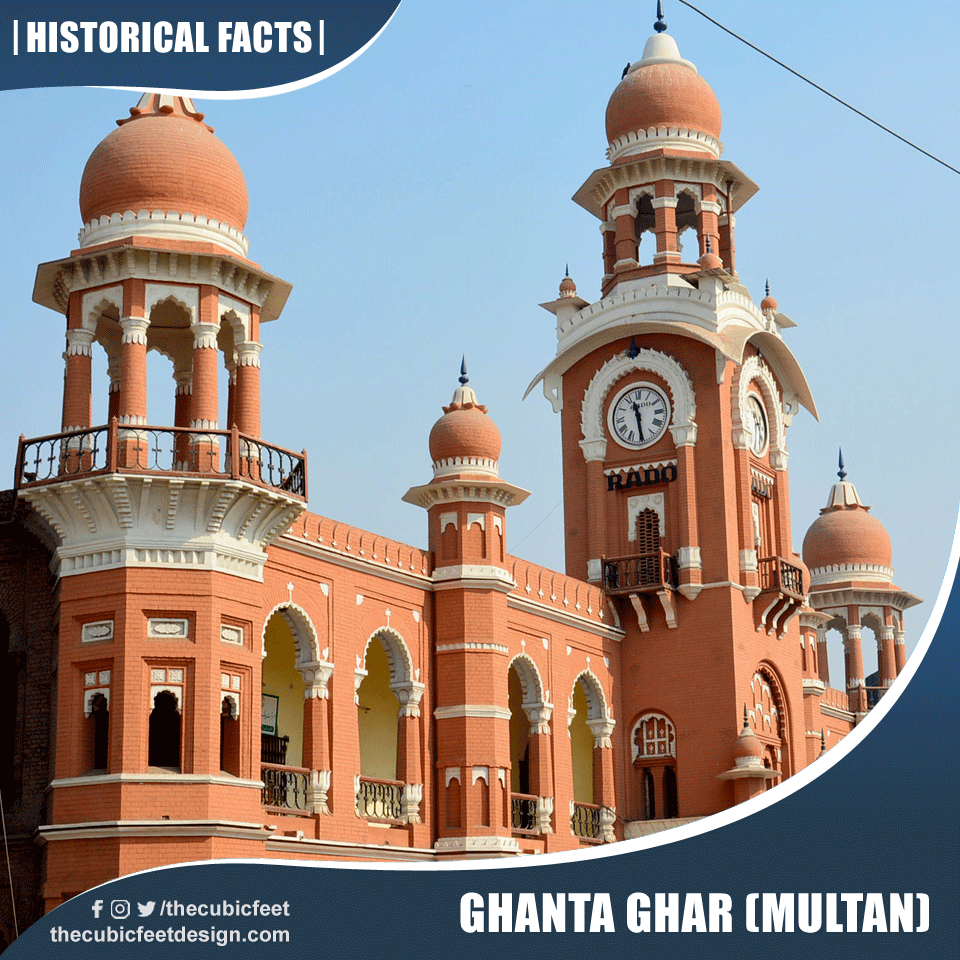
- It was built in 1884 A.D.
- Was built during the British raj
- It took 4 years to complete the building
- Was constructed on the ruins of haveli of Ahmad khan Sadozai
- Building comprises different halls and offices.
- The clock tower was named as Northbrook tower
- Ghanta ghar is being converted in to a museum by the city government
Multan Fort (Fort Kohna Qasim Garden)
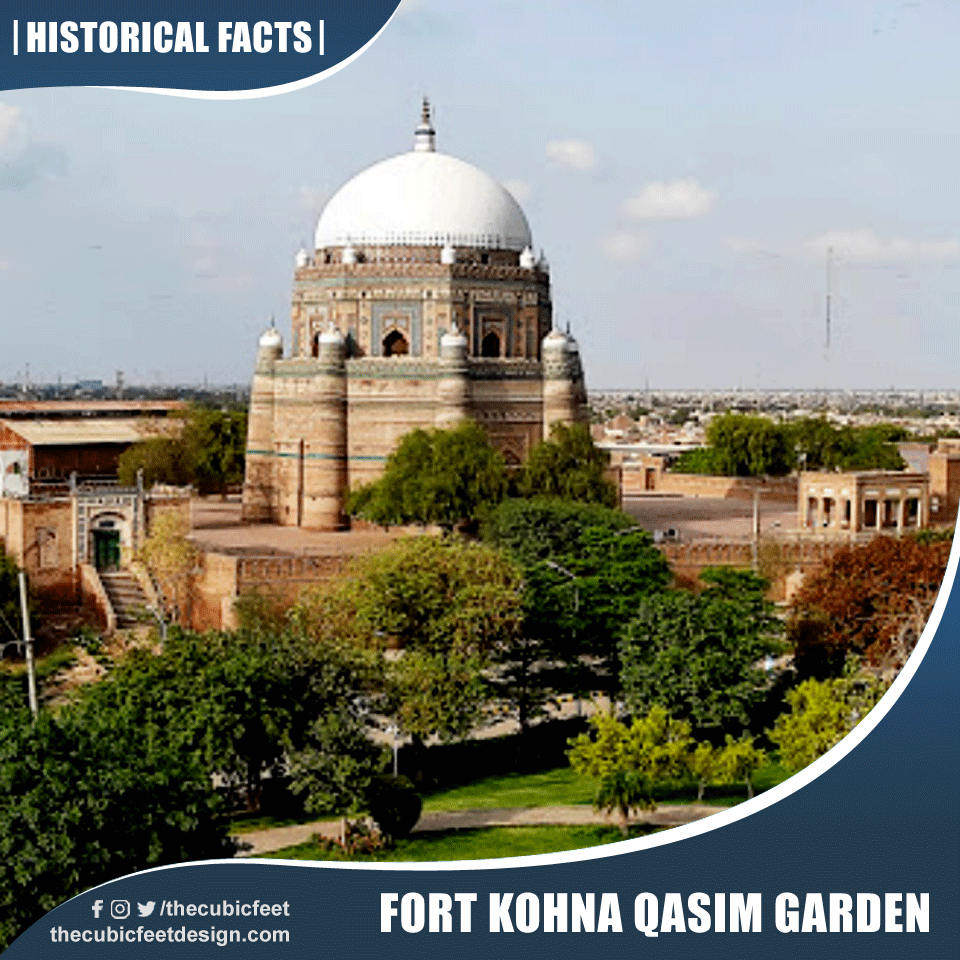
- Also known is Multan fort or old fort
- It is said that the fort is about 2600 years old
- It was bult on the bank of river Ravi and Chenab to protect and defend the city
- An exquisite landmark of south Asian architecture and defence.
- There were four gates of the fort out of which only one has survived up till now known as Qasim gate
- The fort was severely damaged by the British forces during the British colonial raj.
Sun Temple
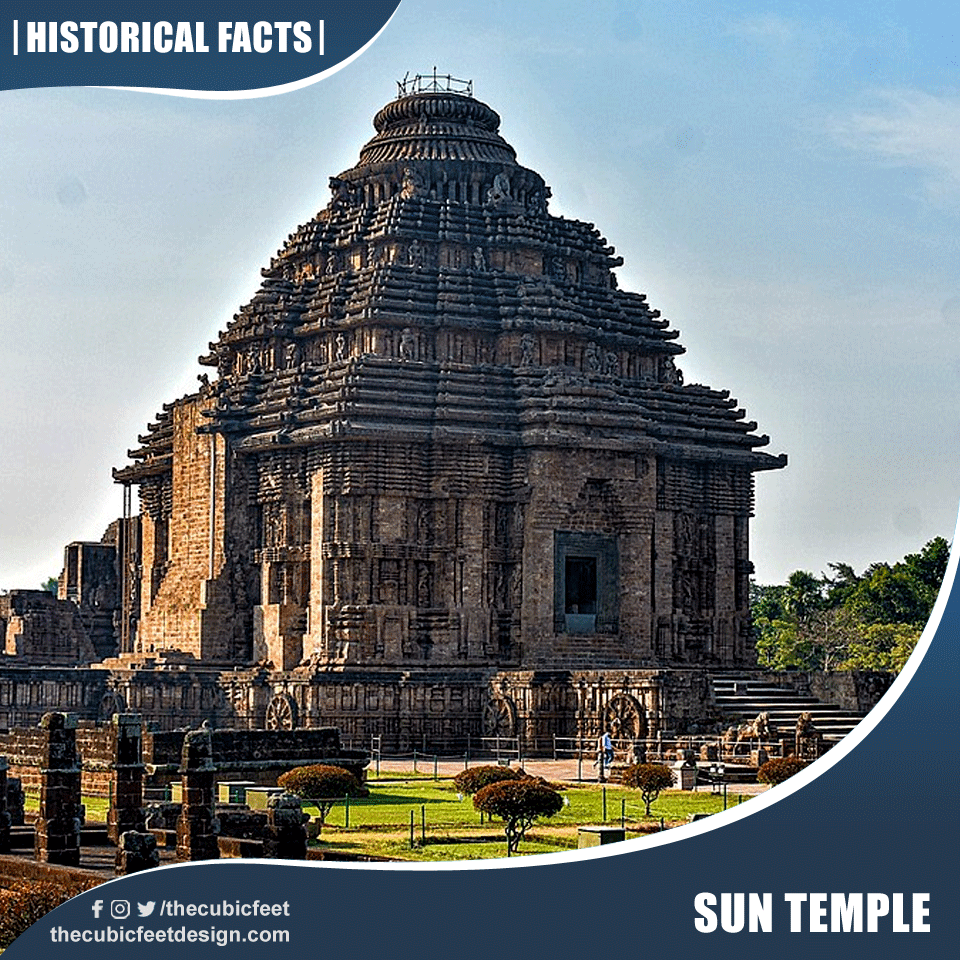
- The sun temple is dedicated to Surya, the Hindu sun god.
- It has a significant fame attached to it as a place of pilgrimage and wealth
- Was destroyed in 10th century by the Ismaili rulers
- It is said that the temple was built somewhere in 614 CE or even before
- The history also connects the sun temple with the followers of Zoroastrian and Buddhist faith.
- One-of-a-kind sun temple. It was part of the pilgrimage for the Hindu staunch followers.
- It was magnificent and profusely decorated.
Vans Agnew Monument
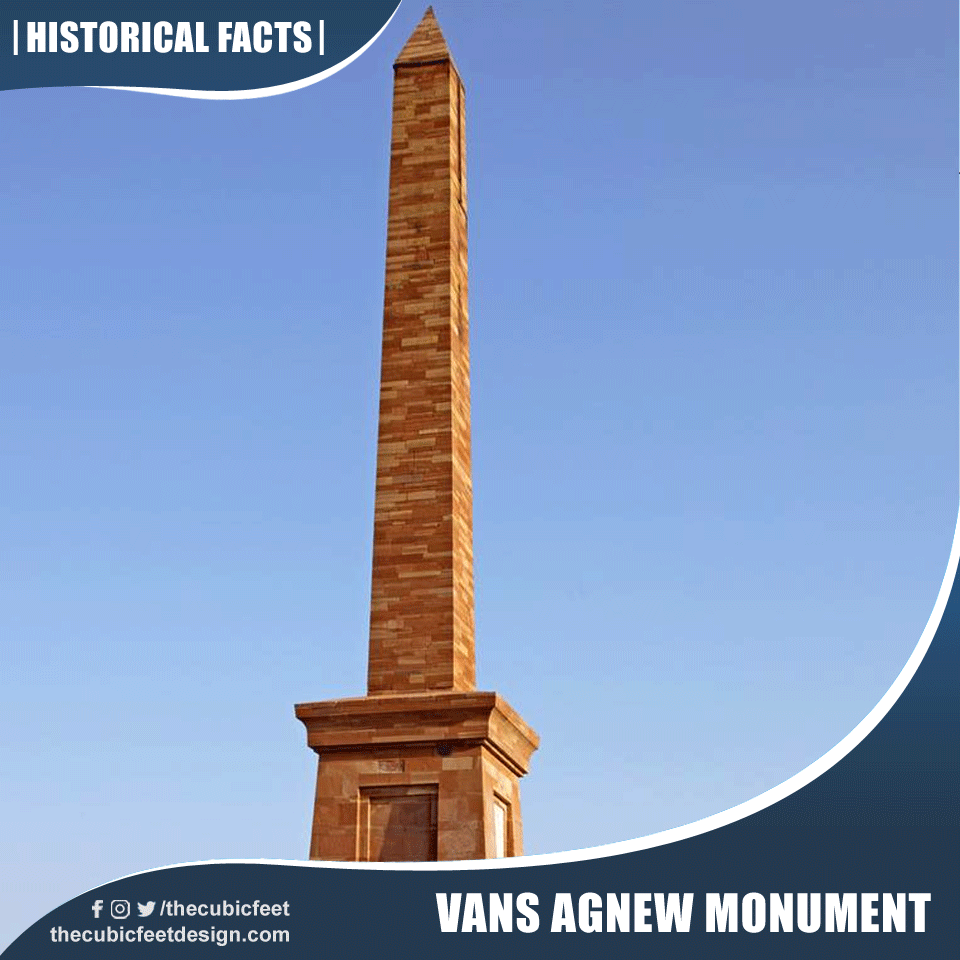
- This monument was erected by the British east India company to honor Patrick alexander vans Agnew and lieutenant W.A. Anderson
- Both of them were assassinated
- Their deaths led to the conquest of Punjab
- Located inside Qasim Bagh
- One of the oldest monuments of the city that reminds of the war of independence.
- It paved way for revolution
- Made in all red brick, the monument is very pleasing to the eyes.
Also Read: Historical Places of Bahawalpur





